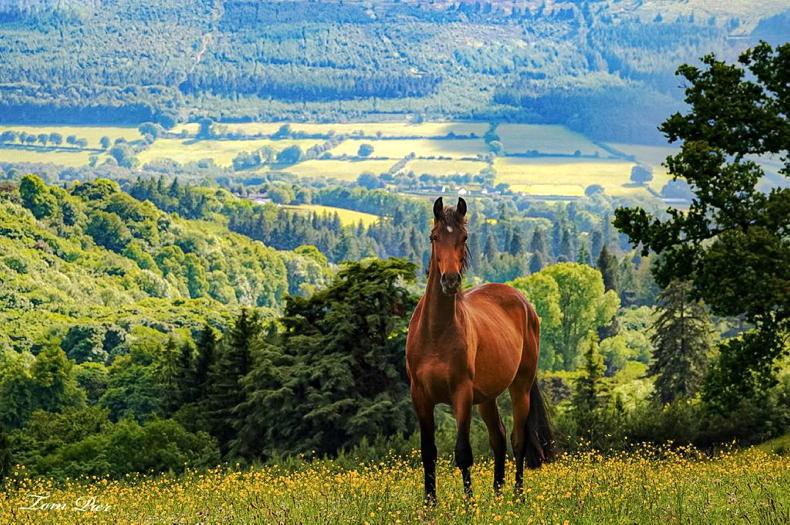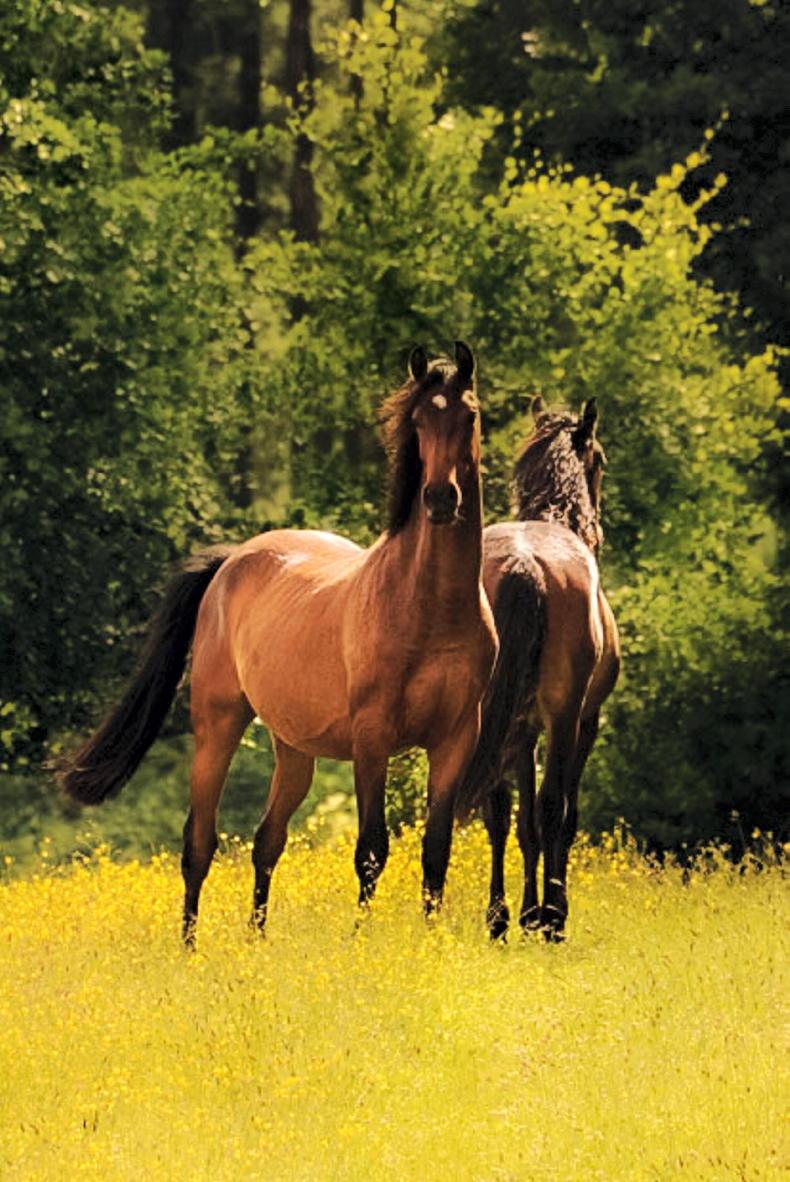DR Green is our best tool for healthy minds and bodies. All our youngstock live out 24/7 all year round in groups. I rent relatively poor land with hilly terrain, but good shelter, and this plays a major factor in the production of our horses.
The late Michael Osborne, of the National Stud and racing fame, emphasised to me many years ago that turnout was the number one priority for youngstock. Having ample space both reduces land damage and worm infestations. From November to March, I supplement their feeding with hay as required. The same applies to our retired horses. During winter, we will use rain sheets and, in recent years, in summer we use fly sheets, as climate change has significantly increased the insect populations, including horse flies and hornets.
Extra nutrition
For horses in work, they are turned out by day and in by night, in an open shed with ad lib feeding of both low feed value hay and straw. If they need extra nutrition, we reverse this as the grass has greater nutrition in the evening period.
Topping the grassland once or twice a year, plus an annual harrow and pulling ragwort is the only management we use, but the occasional use of sheep to clean up the pasture would benefit us. We try and rest sections for a minimum of four to five months each year and always avoid overgrazing and bare paddocks. If this is not possible, it is vital that droppings are picked up and hay or straw is available throughout the turnout period.




 This is a subscriber-only article
This is a subscriber-only article
 It looks like you're browsing in private mode
It looks like you're browsing in private mode






SHARING OPTIONS: